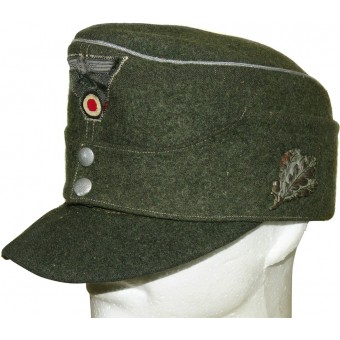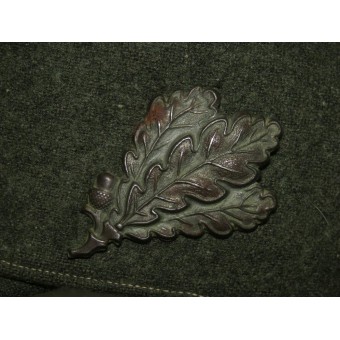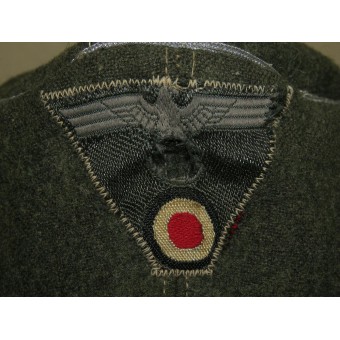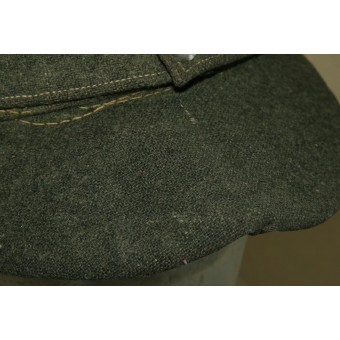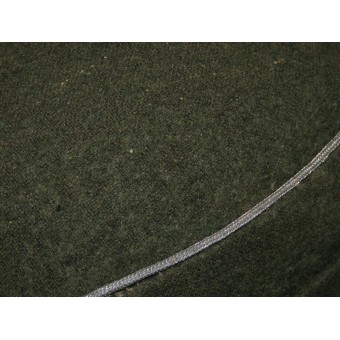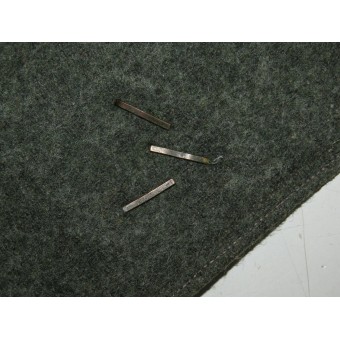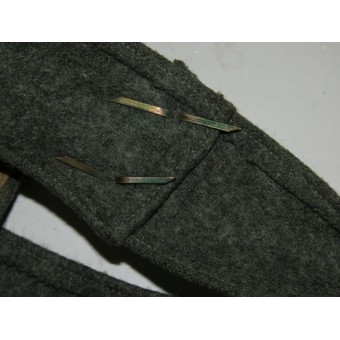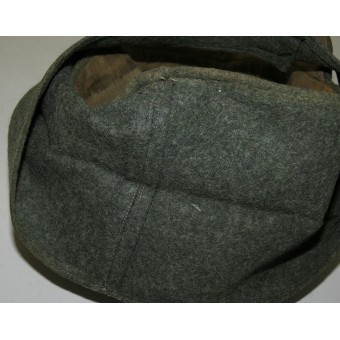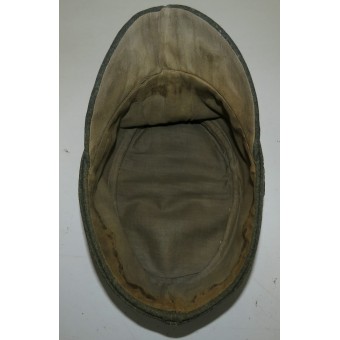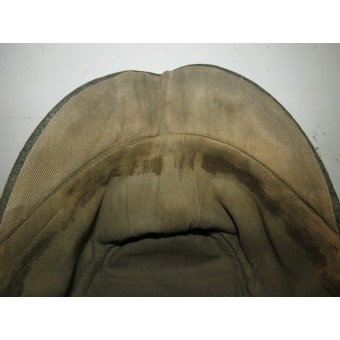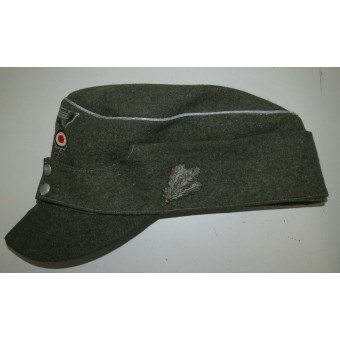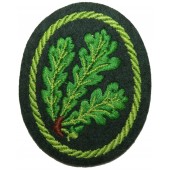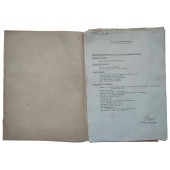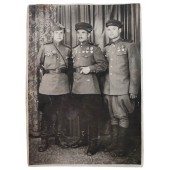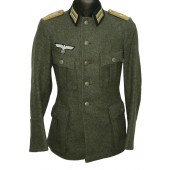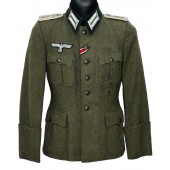Officers Wehrmacht Heer Bergmütze - Jäger mountain troops cap
Officers Wehrmacht Heer Bergmütze - Jäger mountain troops cap. Constructed with a short visor and high peak which is typical for a Bergmütze style. Officer's bullion cord. Originally "Zig-Zag" machine-attached BeVo-woven cap eagle. The swastika was cut out due to postwar denazification. The steel made Jäger leaves badge originally attached with three prongs to the left side of the hat. The hat was found in untouched condition together with tunic and other items belonged to Oberleutnant H. Henne serving with Jäger-Regiment 56. Two visor cap buttons with prongs are originally ww2 period attached by the owner instead of more usual sew in buttons. Interestingly, that his other mountain cap was also completed with same type buttons. The salty condition with traces of heavy use. Size 58-59
The Jäger-Regiment 56 was created in December 1941 in France as part of the 5th Light Infantry Division of the Wehrmacht from the remnants of the 5th Infantry Division. At the beginning of 1942, the division was sent to the eastern front to the Staraya Russa area. On July 6, 1942, the division was renamed the 5th Jaeger Division, which continued the battle at the beginning of the winter of 1942 in the Demyansk area, and until the end of 1943 on the Staraya Russa-Kholm frontline, on the left side from the 21st Luftwaffe Feld division, against units of the 1-st Shock army of the RKKA. At the beginning of 1944, the division was transferred to the Vitebsk region. In March 1944, the division joined the LVI Panzer Corps and took part in the offensive on Kovel. Heavy defensive battles followed in the Kovel and Pripyat area, as well as battles during the retreat through the Bug and Narev to the border of East Prussia. In 1945, heavy defensive battles were fought in East Prussia, as well as battles with a retreat on the Vistula and Oder. After the battle for the Seelow Heights, the division had to withdraw to the Elbe. The division was defeated on May 2, 1945, at Wittenberg. The reconnaissance battalion and the signals battalion crossed the Elbe and surrendered to the US troops. After an unsuccessful breakout attempt, the remaining units in Wittenberg surrendered to the Americans at Lensen (north of Wittenberg) on the night of May 3, 1945.
Officers Wehrmacht Heer Bergmütze - Jäger mountain troops cap. Constructed with a short visor and high peak which is typical for a Bergmütze style. Officer's bullion cord. Originally "Zig-Zag" machine-attached BeVo-woven cap eagle. The swastika was cut out due to postwar denazification. The steel made Jäger leaves badge originally attached with three prongs to the left side of the hat. The hat was found in untouched condition together with tunic and other items belonged to Oberleutnant H. Henne serving with Jäger-Regiment 56. Two visor cap buttons with prongs are originally ww2 period attached by the owner instead of more usual sew in buttons. Interestingly, that his other mountain cap was also completed with same type buttons. The salty condition with traces of heavy use. Size 58-59
The Jäger-Regiment 56 was created in December 1941 in France as part of the 5th Light Infantry Division of the Wehrmacht from the remnants of the 5th Infantry Division. At the beginning of 1942, the division was sent to the eastern front to the Staraya Russa area. On July 6, 1942, the division was renamed the 5th Jaeger Division, which continued the battle at the beginning of the winter of 1942 in the Demyansk area, and until the end of 1943 on the Staraya Russa-Kholm frontline, on the left side from the 21st Luftwaffe Feld division, against units of the 1-st Shock army of the RKKA. At the beginning of 1944, the division was transferred to the Vitebsk region. In March 1944, the division joined the LVI Panzer Corps and took part in the offensive on Kovel. Heavy defensive battles followed in the Kovel and Pripyat area, as well as battles during the retreat through the Bug and Narev to the border of East Prussia. In 1945, heavy defensive battles were fought in East Prussia, as well as battles with a retreat on the Vistula and Oder. After the battle for the Seelow Heights, the division had to withdraw to the Elbe. The division was defeated on May 2, 1945, at Wittenberg. The reconnaissance battalion and the signals battalion crossed the Elbe and surrendered to the US troops. After an unsuccessful breakout attempt, the remaining units in Wittenberg surrendered to the Americans at Lensen (north of Wittenberg) on the night of May 3, 1945.


